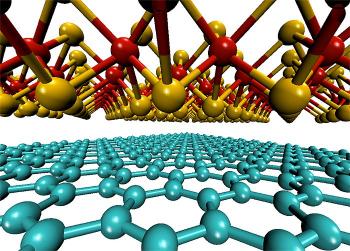Researchers from MIT are developing a new solar cell made from graphene and molybdenum disulfide. They hope to achieve the "ultimate power conversion possible". These panels will be thin, light and efficient - in fact the researchers claim that for the same weight, the new panels will be up to a 1,000 times more efficient than silicon based panels.

A solar cell made from a single graphene sheet and a single molybdenum disulfide sheet will achieve about 1% to 2% efficiency. Silicon based cells achieve 15%-20%, but the researchers believe that stacking several layers together will boost the efficiency dramatically. The two layers together are just 1 nm thick, while silicon cells are hundreds of thousands times thicker.
The researchers have so far only been using theoretical models and calculations, and the next step is to build first prototypes.